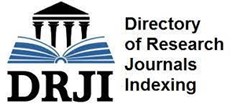Subject Area
Degenerative
Document Type
Original Study
Abstract
Introduction: Posterolateral fusion is commonly used for managing many degenerative spinal problems. Reported pseudarthrosis rate varies between 5-56%. Several approaches have been used for revision, including re-grafting, ALIF, PLIF, and TLIF. Purpose: The aim of this work is to evaluate the radiographic and functional results of TLIF for the management of symptomatic lumbar pseudarthrosis and to compare between revising posterolateral fusion by re-grafting and by TLIF using autogenous iliac bone graft. Study Design: This is prospective comparative study Methods: Forty-three patients with symptomatic pseudarthrosis after previous posterolateral fusion were revised using TLIF technique and were prospectively evaluated and followed for a minimum of 2 years (Range=2-5.6 years). The clinical and radiological outcomes were recorded and compared to a different group of another 21 patients treated earlier with refreshing the same fusion bed and re-grafting. Only autogenous iliac grafts were used in all cases. VAS and Oswestry Disability Index (ODI) were used for the clinical assessment. Radiographs were obtained at 2, 6, 12 and 24 months.Results: There was no significant difference in the mean amount of blood loss between both groups. However, the mean operative time for TLIF was significantly shorter than the revision PLF. At 2 years follow-up, the TLIF group showed significantly better improvement in the mean VAS score and ODI scores (42 and 43 in TLIF group versus 8 and 21 in the PLF group) and the fusion rate was also significantly higher. Complications included incidental dural tear (2 patients) in the TLIF group that was recognized intraoperatively and successfully repaired, superficial infection (1 patient)in the posterolateral group, and donor site discomfort (2 patients in each group). Conclusion: The significantly higher success of TLIF for revising pseudarthrosis after posterolateral fusion is attributed to the fact of placing the graft in a wide fresh bed under compression. The approach is relatively easy and safe for the neural tissue because it avoids any fibrosis from previous surgery and its use is therefore encouraged. (2012ESJ014)
Keywords
Pseudarthrosis, TLIF, Instrumentation, Posterolateral Fusion, PLF, Autograft
How to Cite This Article
El-Sharkawi, Mohammad; Koptan, Wael; and ElMiligui, Yasser
(2012)
"Transforaminal Lumbar Interbody Fusion (TLIF) for Revision of Failed Posterolateral Spinal Fusion,"
Advanced Spine Journal: Vol. 2
:
Iss.
1
, Article 5.
Available at: https://doi.org/10.21608/esj.2012.3784























